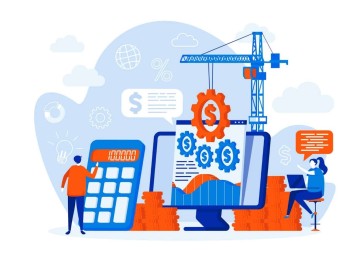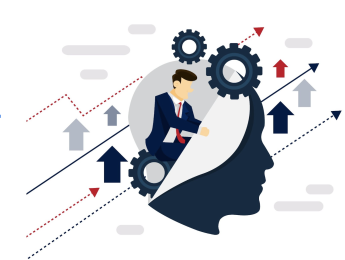- Table of Contents
- Introduction
- What Is Productivity?
- Productivity vs. Toxic Productivity
- Signs of Toxic Productivity:
- Navigating Away from Toxic Productivity:
- How Is Productivity Measured in the Workplace?
- 1. Output Metrics
- 2. Time Management
- 3. Quality Assessment
- 4. Project Milestones
- 5. Employee Feedback
- 6. Efficiency Ratios
- 7. Absenteeism and Attendance Rates
- 8. Revenue per Employee
- Why Is It Important to Measure Productivity?
- Performance Improvement
- Resource Allocation
- Accountability and Responsibility
- Goal Setting and Strategic Planning
- Data-Driven Decision-Making
- Employee Motivation and Recognition
- Identifying Training Needs
- Enhanced Customer Satisfaction
- Cost Efficiency
- 15 Effective Strategies to Improve the Productivity of Your Team
- 1. Prioritisation and Focus
- 2. Clear Goal Setting
- 3. Time Management Techniques
- 4. Task Delegation
- 5. Embrace Automation
- 6. Continuous Learning Culture
- 7. Regular Breaks
- 8. Constructive Feedback Loop
- 9. Clear Communication Channels
- 10. Healthy Work Environment
- 11. Recognition and Rewards
- 12. Employee Well-being Programmes
- 13. Mindfulness Practices
- 14. Flexible Scheduling
- 15. Team Building Activities
- Is Multitasking Healthy?
- Productivity in the Presence of Technology
- 1. Embrace Productivity Tools
- 2. Set Clear Technology Policies
- 3. Implement Training Programmes
- 4. Encourage Digital Detox
- 5. Foster Digital Collaboration
- 6. Combat Information Overload
- 7. Cybersecurity Measures
- 8. Regular Software Updates
- 9. Mindful Technology Use
- 10. Balance Automation and Human Input
- Conclusion
Introduction
Picture this: a workplace where every task is efficiently completed, deadlines are consistently met, and employees are motivated and satisfied. This utopian scenario is the embodiment of productivity in the workplace. Productivity is a multifaceted concept that encompasses various elements, from the effective use of time to the quality of output. In this comprehensive guide, we'll delve deep into what productivity truly means, how to measure it, strategies to enhance it, and its complex relationship with technology and multitasking.
What Is Productivity?
Productivity is the linchpin that underpins the success of any organisation. It's the art of getting more done with less effort. At its core, productivity involves maximising output while minimising input. In simpler terms, it's about achieving the best results with the least resources.
Productivity isn't just about doing more; it's about doing the right things efficiently. It hinges on prioritisation, focus, and effective time management. A productive workplace is one where employees are empowered to make the most of their time, skills, and energy.
Productivity vs. Toxic Productivity
Before we dive into strategies to boost productivity, it's crucial to distinguish between genuine productivity and its toxic counterpart. Toxic productivity is a term that has gained prominence in recent years. It refers to the unhealthy and unsustainable pursuit of productivity at the expense of well-being and work-life balance.
Genuine productivity encourages work efficiency, while toxic productivity demands overwork and burnout. It's essential to foster a culture of healthy productivity, where employees are encouraged to be effective rather than toil endlessly. Striking this balance is vital for long-term success and employee well-being.
Signs of Toxic Productivity:
Perfectionism
While aiming for high standards is admirable, a toxic perfectionist obsesses over every detail, leading to procrastination and anxiety when things aren’t flawless.
Never Switching Off
Employees exhibiting toxic productivity find it hard to disengage from work. They respond to emails at all hours, sacrificing personal time and relaxation.
Self-Worth Tied to Productivity
When an individual’s self-worth is entirely dependent on productivity, it can lead to a constant feeling of inadequacy, even after achieving significant milestones.
Ignoring Mental and Physical Health
Those trapped in toxic productivity often overlook signs of burnout, anxiety, and other health issues, believing they can power through any obstacle.
Fear of Rest
Paradoxically, the idea of taking breaks or vacations induces anxiety. The fear of falling behind or missing out on opportunities keeps them chained to their desks.
Comparing and Competing
Constantly comparing oneself to others and striving to outperform colleagues or competitors is a hallmark of toxic productivity. This unhealthy competition leads to chronic stress.
Neglecting Relationships
Personal relationships are sacrificed on the altar of work. Toxic productivity can strain familial, social, and romantic connections, leading to isolation.
Navigating Away from Toxic Productivity:
Self-Awareness
Recognising the signs of toxic productivity is the first step. Encourage employees to reflect on their work habits and their impact on overall well-being.
Setting Realistic Expectations
Help team members set achievable goals. Unrealistic targets breed stress and often lead to burnout.
Encouraging Breaks
Promote a culture where breaks are not just allowed but encouraged. Short pauses enhance focus and creativity, leading to higher overall productivity.
Promoting Mental Health
Create an environment where mental health is prioritised. Offer counselling services, encourage open conversations, and reduce the stigma around seeking help.
Work-Life Balance
Emphasise the importance of a healthy work-life balance. Encourage employees to set boundaries and respect their off-work hours.
Regular Check-Ins
Supervisors should have regular one-on-one check-ins with their team members, not just to discuss work progress but also to gauge their mental and emotional well-being.
Celebrate Progress, Not Perfection
Shift the focus from achieving perfection to acknowledging progress. Celebrate both big and small achievements, fostering a positive work environment.
Encourage Hobbies and Interests
Encourage employees to pursue hobbies and interests outside of work. Engaging in activities they love can significantly reduce stress and boost overall happiness.
In essence, recognising the signs of toxic productivity and actively working to mitigate them is crucial for cultivating a healthy work environment. By promoting a balanced approach to productivity and well-being, organisations can foster a culture where employees thrive both professionally and personally, leading to sustained success in the long run.
How Is Productivity Measured in the Workplace?
Measuring productivity is a complex task. It's not as simple as counting the number of hours worked or tasks completed. Effective measurement requires a nuanced approach. Common methods include:
1. Output Metrics
Output metrics are among the most straightforward indicators of productivity. These metrics quantify the tangible results of an employee's work. For example, in a manufacturing setting, it could be the number of units produced per hour, while in a sales environment, it could be the number of deals closed within a specific timeframe. Output metrics provide a clear picture of the direct impact an employee has on the organisation's goals.
2. Time Management
Time management metrics focus on how employees allocate their time during working hours. Time tracking software and project management tools can provide detailed insights into tasks' duration, helping identify bottlenecks and areas where efficiency can be improved. Analysing time management data allows organisations to optimise workflows, ensuring tasks are completed within reasonable timeframes.
3. Quality Assessment
Productivity isn't solely about quantity; quality is equally important. Quality assessment metrics measure the accuracy, precision, and overall excellence of an employee's output. For instance, in customer service, it could be the customer satisfaction score, while in content creation, it could be the accuracy and relevance of the information provided. High-quality work often leads to higher customer satisfaction and can contribute significantly to the organisation's reputation and success.
4. Project Milestones
For larger projects or tasks, tracking progress against predefined milestones is a valuable productivity measurement method. Milestones serve as markers of progress, allowing teams to assess if they are on track to meet their goals within the specified timeframe. Monitoring project milestones helps in identifying potential delays early, enabling timely interventions and adjustments to ensure successful project completion.
5. Employee Feedback
Employee feedback is an invaluable qualitative metric. While it might not be as quantifiable as other metrics, it provides insights into the employees' perspectives. Regular surveys, one-on-one meetings, and open communication channels enable employees to express their thoughts on the work environment, processes, and challenges they face. Addressing the concerns raised through feedback mechanisms can lead to improvements in overall morale and productivity.
6. Efficiency Ratios
Efficiency ratios measure the relationship between input and output. For instance, in a manufacturing context, it could be the ratio of raw materials used to the number of units produced. By calculating efficiency ratios, organisations can identify resource wastage and optimise processes, ensuring that resources are utilised optimally to achieve maximum output.
7. Absenteeism and Attendance Rates
While it might seem indirect, tracking absenteeism rates is a crucial productivity metric. Excessive absenteeism can disrupt workflow, leading to increased workload for other employees. Monitoring attendance rates helps in identifying patterns and taking proactive measures, such as offering support to employees facing personal challenges or addressing workplace issues that might be contributing to absenteeism.
8. Revenue per Employee
In revenue-driven organisations, revenue per employee is a vital metric. It calculates the revenue generated by each employee, providing insights into their contribution to the company's financial success. By analysing this metric over time, organisations can assess the effectiveness of their workforce and make strategic decisions regarding staffing levels and resource allocation.
In short, measuring productivity in the workplace isn't a one-size-fits-all endeavour. It requires a combination of quantitative and qualitative metrics tailored to the organisation's specific goals and industry. By employing a diverse range of measurement methods, organisations can gain a comprehensive understanding of their productivity landscape. This understanding, in turn, empowers them to make informed decisions, optimise processes, and create an environment where employees can thrive and contribute meaningfully to the organisation's success.
Why Is It Important to Measure Productivity?
Understanding productivity's importance is pivotal to creating a culture of efficiency in the workplace. Here are a few compelling reasons why measuring productivity is vital:
Performance Improvement
Measuring productivity allows organisations to identify inefficiencies and bottlenecks in workflows. By analysing these metrics, businesses can implement targeted improvements, streamline processes, and enhance overall efficiency. This continuous cycle of analysis and enhancement drives perpetual improvement, ensuring that the organisation operates at its optimum level.
Resource Allocation
Effective measurement of productivity aids in intelligent resource allocation. When organisations understand which tasks or projects yield the highest productivity, they can allocate resources – human, financial, and material – strategically. This prevents resource wastage and ensures that the right resources are deployed where they can make the most significant impact.
Accountability and Responsibility
Productivity measurement fosters accountability within the workforce. When employees are aware that their performance is being measured, they tend to take more responsibility for their tasks. This accountability cultivates a sense of ownership, motivating employees to perform to the best of their abilities.
Goal Setting and Strategic Planning
Accurate productivity measurements provide valuable insights that inform goal-setting and strategic planning. Realistic and data-driven goals can be set, ensuring that they align with the organisation’s capabilities and market demands. These goals serve as a roadmap, guiding the company toward its objectives with precision.
Data-Driven Decision-Making
Productivity metrics form the foundation of data-driven decision-making. Organisations can make informed choices based on quantitative and qualitative data, leading to more accurate strategic decisions. This data-driven approach minimises the risk of making decisions based on intuition or guesswork, ensuring that choices are grounded in reality and likely to yield positive results.
Employee Motivation and Recognition
Transparent productivity metrics provide a clear way to recognise and reward high-performing employees. Acknowledging and appreciating productivity boosts employee morale and motivation. It also fosters healthy competition within the workforce, encouraging employees to continually strive for improvement.
Identifying Training Needs
By analysing productivity metrics, organisations can identify skill gaps among employees. This insight is invaluable for targeted training programmes. Addressing these gaps through training and upskilling initiatives ensures that the workforce is equipped with the necessary knowledge and abilities to perform tasks efficiently.
Enhanced Customer Satisfaction
Efficient and productive employees are better equipped to meet customer demands promptly and effectively. By measuring productivity, organisations ensure that customer needs are met in a timely manner. This, in turn, leads to enhanced customer satisfaction, fostering customer loyalty and positive brand perception.
Cost Efficiency
Optimising productivity often leads to cost efficiency. When tasks are completed more efficiently, it reduces the time and resources required for each job. This can lead to significant cost savings, allowing organisations to invest resources in areas that contribute directly to growth and innovation.
In summary, measuring productivity is a strategic imperative for any organisation aiming for sustained growth and success. It’s not just a metric; it’s a compass that guides organisations toward efficiency, accountability, and excellence. By understanding the importance of productivity measurement and integrating it into the organisational culture, businesses can create a dynamic, responsive, and high-performing workforce, paving the way for enduring success in today’s competitive landscape.
15 Effective Strategies to Improve the Productivity of Your Team
Enhancing productivity is an ongoing process that demands commitment and adaptability. Here are 15 effective strategies to improve your team's productivity:
1. Prioritisation and Focus
Encourage team members to prioritise tasks based on urgency and importance. Using tools like the Eisenhower Matrix, they can focus on high-priority tasks first, ensuring that vital objectives are met efficiently.
2. Clear Goal Setting
Facilitate a culture of clear, achievable goal-setting. Well-defined goals provide direction, motivation, and a sense of purpose, driving team members to work towards common objectives.
3. Time Management Techniques
Teach your team various time management techniques such as the Pomodoro Technique or time blocking. These methods help individuals manage their time effectively, allowing for focused work intervals followed by short breaks, enhancing overall productivity.
4. Task Delegation
Promote effective task delegation within the team. Understanding team members’ strengths and assigning tasks accordingly not only maximises efficiency but also fosters a sense of ownership and responsibility.
Table 1: Time management techniques comparison
Technique | Description | Benefits |
Pomodoro Technique | Work in short, focused intervals. | Enhances focus; reduces procrastination. |
Time Blocking | Allocate specific blocks for tasks. | Organises tasks; prevents multitasking. |
Eisenhower Matrix | Prioritise tasks based on urgency. | Enhances prioritisation; reduces stress. |
5. Embrace Automation
Identify repetitive tasks that can be automated. Utilising automation tools not only saves time but also reduces the risk of errors, allowing team members to concentrate on more strategic and creative aspects of their work.
6. Continuous Learning Culture
Encourage a culture of continuous learning. Provide access to training programmes, workshops, and online courses. Team members who continuously upgrade their skills bring fresh perspectives and enhanced efficiency to their roles.
7. Regular Breaks
Promote the importance of regular breaks during the workday. Short breaks, even for a few minutes, help in recharging mental energy, improving focus, and preventing burnout.
8. Constructive Feedback Loop
Establish a feedback system where team members receive regular, constructive feedback. Open communication ensures that individuals understand their strengths and areas for improvement, leading to enhanced productivity.
9. Clear Communication Channels
Establish clear and open communication channels within the team. Transparent communication fosters trust, prevents misunderstandings, and ensures that everyone is on the same page, reducing the likelihood of errors due to miscommunication.
10. Healthy Work Environment
Create a healthy and ergonomic work environment. Comfortable workstations, proper lighting, and a positive atmosphere contribute significantly to overall well-being, enhancing focus and productivity.
11. Recognition and Rewards
Implement a system for recognising and rewarding achievements. Acknowledging hard work boosts morale and motivation, driving team members to perform at their best consistently. In fact, according to a recent Harvard Business Review study, individuals exhibit increased dedication and effort when they are being observed and acknowledged for their hard work.
12. Employee Well-being Programmes
Invest in employee well-being programmes that address both physical and mental health. Initiatives such as yoga classes, stress management workshops, and mental health support services contribute to a healthier, more focused workforce.
13. Mindfulness Practices
Promote mindfulness practices such as meditation or breathing exercises. Mindfulness reduces stress, enhances concentration, and improves overall mental well-being, enabling team members to work more efficiently. In fact, in a Detroit study exploring workplace meditation, results revealed remarkable improvements: absenteeism decreased by 85%, productivity surged by 120%, and workplace injuries plummeted by 70%!
14. Flexible Scheduling
Allow for flexible work schedules where possible. Allowing team members to balance work and personal commitments can lead to increased job satisfaction and, consequently, higher productivity.
15. Team Building Activities
Invest in team-building activities that encourage collaboration, trust, and camaraderie among team members. A cohesive team is more likely to work efficiently together, solving problems and completing tasks seamlessly.
Incorporating these strategies into your team’s daily routine creates a foundation for improved productivity. Remember, productivity is not a one-size-fits-all concept; it requires continuous adaptation and a deep understanding of your team’s dynamics. By fostering a supportive, skill-enhancing, and positive work environment, you empower your team to achieve their full potential, driving the organisation toward its goals with unparalleled efficiency and enthusiasm.
Is Multitasking Healthy?
The myth of multitasking as a productivity booster has been debunked. Contrary to popular belief, juggling multiple tasks simultaneously doesn't make us more efficient. In reality, it leads to decreased focus, lower quality work, and increased stress. In fact, studies indicate that the human brain cannot truly multitask. Instead, it rapidly shifts between tasks, a phenomenon known as "task switching", which means that basically, you're interrupting yourself, and this leads to lower productivity.
While it's possible to perform simple, repetitive tasks concurrently, cognitive tasks, such as problem-solving or decision-making, require undivided attention. Encourage your team to focus on one task at a time, which leads to better results and reduces stress levels.
Productivity in the Presence of Technology
In today’s fast-paced world, technology has become an integral part of the workplace, transforming the way we work and communicate. While technology offers unprecedented opportunities for efficiency and innovation, it also presents unique challenges when it comes to maintaining productivity. Here’s how organisations can navigate the complex landscape of productivity in the presence of technology:
1. Embrace Productivity Tools
Technology provides a plethora of productivity tools designed to streamline tasks, enhance collaboration, and improve communication. Project management software like Asana and Trello, communication tools like Slack, and collaborative platforms like Google Workspace empower teams to work together seamlessly, fostering productivity and efficiency.
2. Set Clear Technology Policies
Establish clear guidelines regarding technology usage in the workplace. Define acceptable use policies, specifying when and how technology should be utilised. Setting boundaries ensures that technology serves as a productivity enabler rather than a distraction.
3. Implement Training Programmes
Technology is only as effective as the users utilising it. Provide comprehensive training programmes to ensure that employees are proficient in using productivity tools. Well-trained employees can harness the full potential of technology, maximising their efficiency in various tasks.
4. Encourage Digital Detox
While technology is essential, constant digital engagement can lead to burnout and reduced productivity. Encourage employees to take digital detox breaks, where they disconnect from screens and engage in activities that promote relaxation and mental well-being. Balancing digital engagement with periods of digital detox fosters overall productivity.
5. Foster Digital Collaboration
Digital collaboration platforms enable teams to work together in real time, regardless of geographical locations. Encourage collaborative practices such as virtual brainstorming sessions, online document sharing, and video conferencing. Digital collaboration enhances communication and teamwork, driving productivity to new heights.
6. Combat Information Overload
The digital age often inundated us with information. Teach employees strategies to manage information overload, such as prioritising essential communication, organising emails efficiently, and using filters to categorise messages. A clutter-free digital environment enhances focus and productivity.
7. Cybersecurity Measures
Implement robust cybersecurity measures to protect digital assets. Security breaches and data loss can be catastrophic for productivity. Educate employees about cybersecurity best practices and invest in secure technologies to ensure a safe digital workspace.
8. Regular Software Updates
Outdated software can lead to inefficiencies and security vulnerabilities. Regularly update software and applications to access new features, enhance performance, and ensure compatibility with the latest technologies. Up-to-date software contributes to a smooth workflow, improving overall productivity.
9. Mindful Technology Use
Encourage mindful technology use among employees. This includes being aware of the time spent on digital devices and applications. Implement techniques such as time tracking or the use of productivity apps that help individuals understand their digital habits. Mindful technology use promotes self-awareness and better time management.
10. Balance Automation and Human Input
Automation can significantly boost productivity, but it's crucial to strike a balance between automated processes and human input. While automation handles repetitive tasks, human creativity, critical thinking, and emotional intelligence are irreplaceable. Recognise the tasks that require a human touch and those that can be automated to achieve optimal productivity.
In essence, technology is a powerful ally in the quest for enhanced productivity. By leveraging its capabilities effectively, setting clear guidelines, and fostering a mindful digital environment, organisations can create a harmonious balance where technology facilitates productivity without compromising the well-being and creativity of the workforce. The key lies in embracing technology as a tool that empowers, connects, and enhances the human potential within the workplace, propelling organisations toward unparalleled productivity and success.
Conclusion
Productivity in the workplace is a multifaceted concept that requires a holistic approach. It involves creating a culture of healthy productivity, measuring it effectively, and implementing strategies that empower your team to work efficiently. By understanding the nuanced aspects of productivity and adapting to the ever-evolving workplace landscape, you can lead your team to new heights of success, where productivity is not just a buzzword but a way of life.
And, if you're eager to delve deeper into the art of effective office management and unlock the full potential of your workplace, our course, ‘Effective Office Management’, is your gateway to mastering these skills. Join now to revolutionise your office dynamics, streamline operations, and lead your team to unparalleled success! Don't miss this opportunity to transform your workplace into a hub of productivity and excellence. Enrol today and empower your team for a future of unparalleled achievements!
























